“A sharp tongue is the only edge tool that grows keener with constant use.” So said the American writer and diplomat Washington Irving. In this post, we explore the importance of tool sharpening in woodworking with artisan Robin Wood MBE.
Based in Edale in Derbyshire, he produces beautiful tools, bowls, plates, spoons and much more using traditional methods. In foregoing the use of sandpaper, he relies entirely upon the sharpness of his tools to craft his woodware with the cleanest of finishes. Running regular courses covering myriad topics, including knife and axe sharpening, he also shares his expertise online in a series of YouTube videos. A useful starting point if you’re unsure how to effectively sharpen your tools, the following guides will leave you with more time and confidence to hone your craft rather than worrying if your tools are up to scratch.
The importance of sharpening tools
According to Robin, sharp tools are essential for any woodworker and tool sharpening is one of the things we tend not to dedicate sufficient time to doing.
Good sharp tools are essential for woodworkers and learning to take a blunt piece of metal and get it to razor sharp is a very empowering experience. There is often a lot of mystery involved but there should not be, sharpening is simple and it all hangs on proper understanding and learning of basic techniques. In my experience most woodworkers study sharpening just long enough to find a system that works for them and then they stick to it for a lifetime swearing that it is by far the best way. I like to keep an open mind. All sharpening systems are effectively doing the same thing, they are using something abrasive to cut away metal, removing the damaged or worn edge and revealing a new sharp edge underneath.
A lack of confidence can also be common amongst those new to woodworking and he notes that upon completion of one of his sharpening courses:
At the end of the day we had razor sharp knives but more importantly everyone felt they could achieve razor sharp knives entirely on their own with their own equipment at home. This is very empowering. We had been chatting about how many folk buy new tools and fear taking them to the stone the first time in case they make them worse. Once you have taken a clearly blunt and damaged knife into a state where it will produce a mirror polish on the wood it cuts you lose all that fear.
Below are three guides produced by Robin for the novice sharpener: the first a general introduction to sharpening; the second a guide to sharpening an axe; and the third a guide to sharpening a hook knife, such as you might use for spooncarving.
Introduction to sharpening
How to sharpen an axe
How to sharpen a hook knife
And once sharpened, be sure to store well – as mentioned in the video, carving wood doesn’t blunt knives but touching other bits of metal does, so always keep some kind of sheath and put your knife away safely.
Adapted with kind permission from original posts about tool sharpening here and here on Robin’s Wood Craft Blog. You can find out more about Robin’s work and visit his website via the Lowimpact.org directory. For more information about woodworking, check out our topic introduction here.

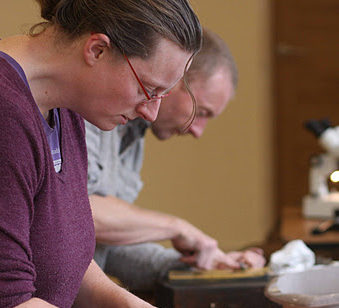
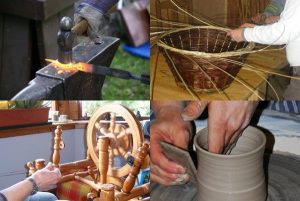
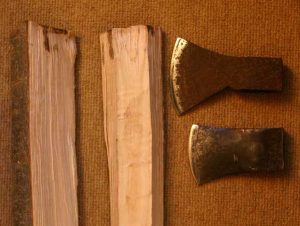
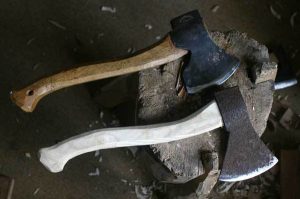


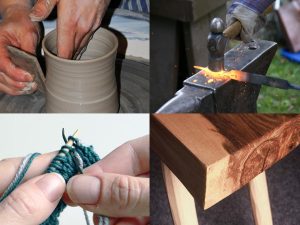
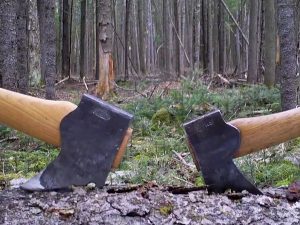
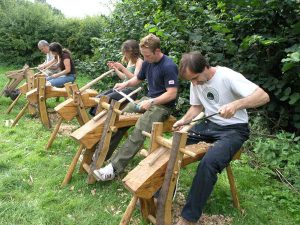
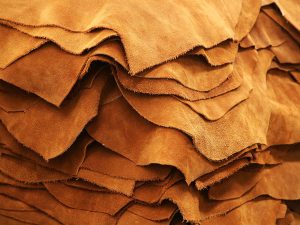
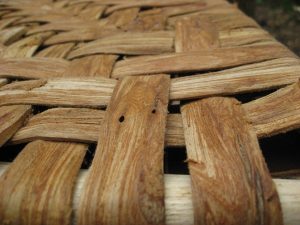
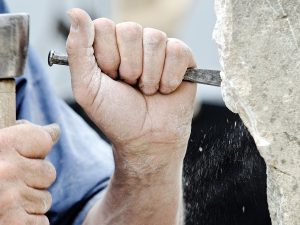
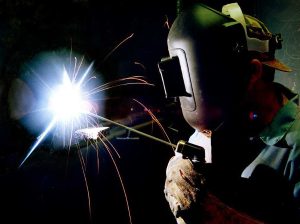
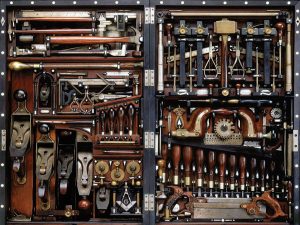
1 Comment
Hm… I think you were right after all; our hatchet does need to be sharpened periodically so we can continue to use it safely. I have an uncle who would do some carpentry work during the weekend which requires lots of sharp tools.